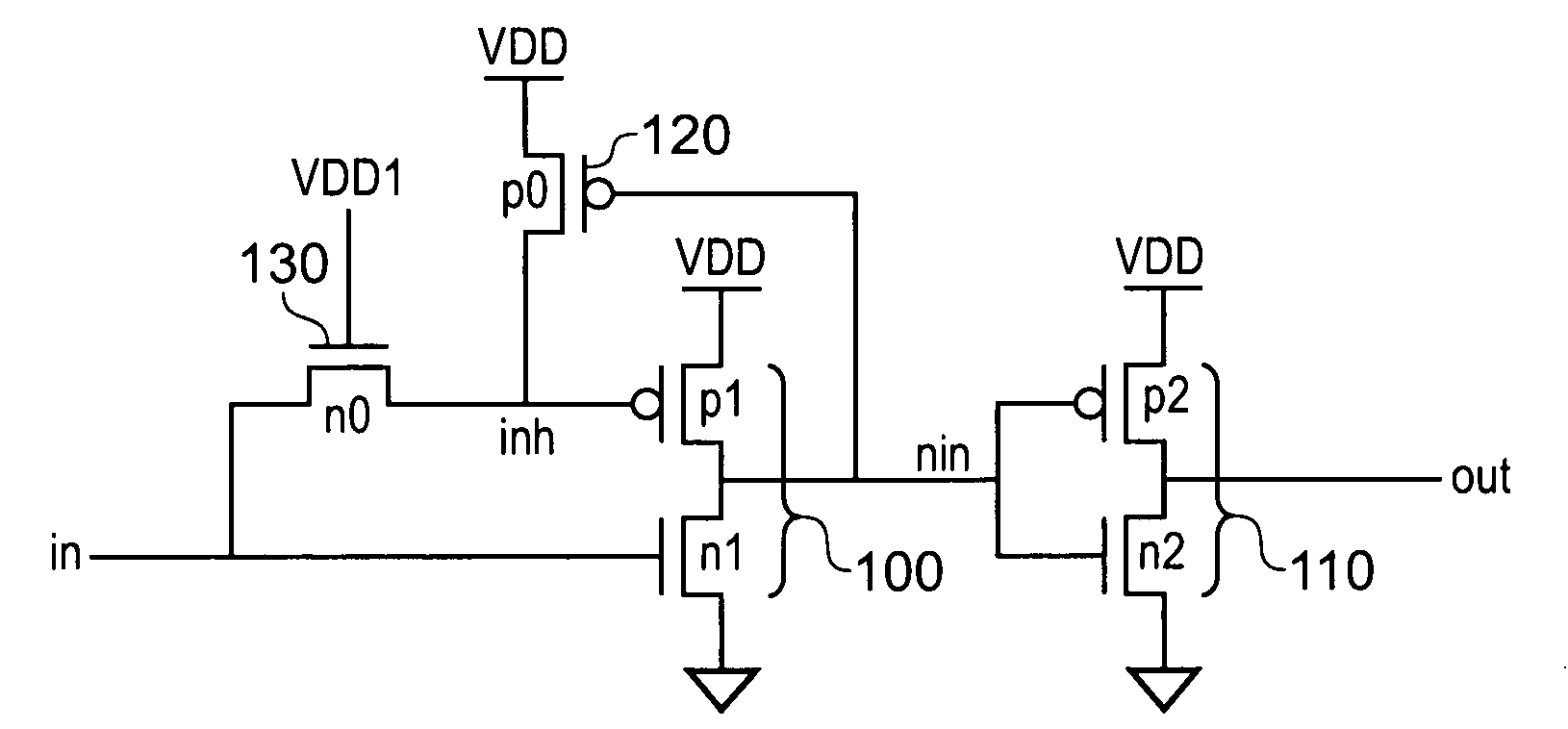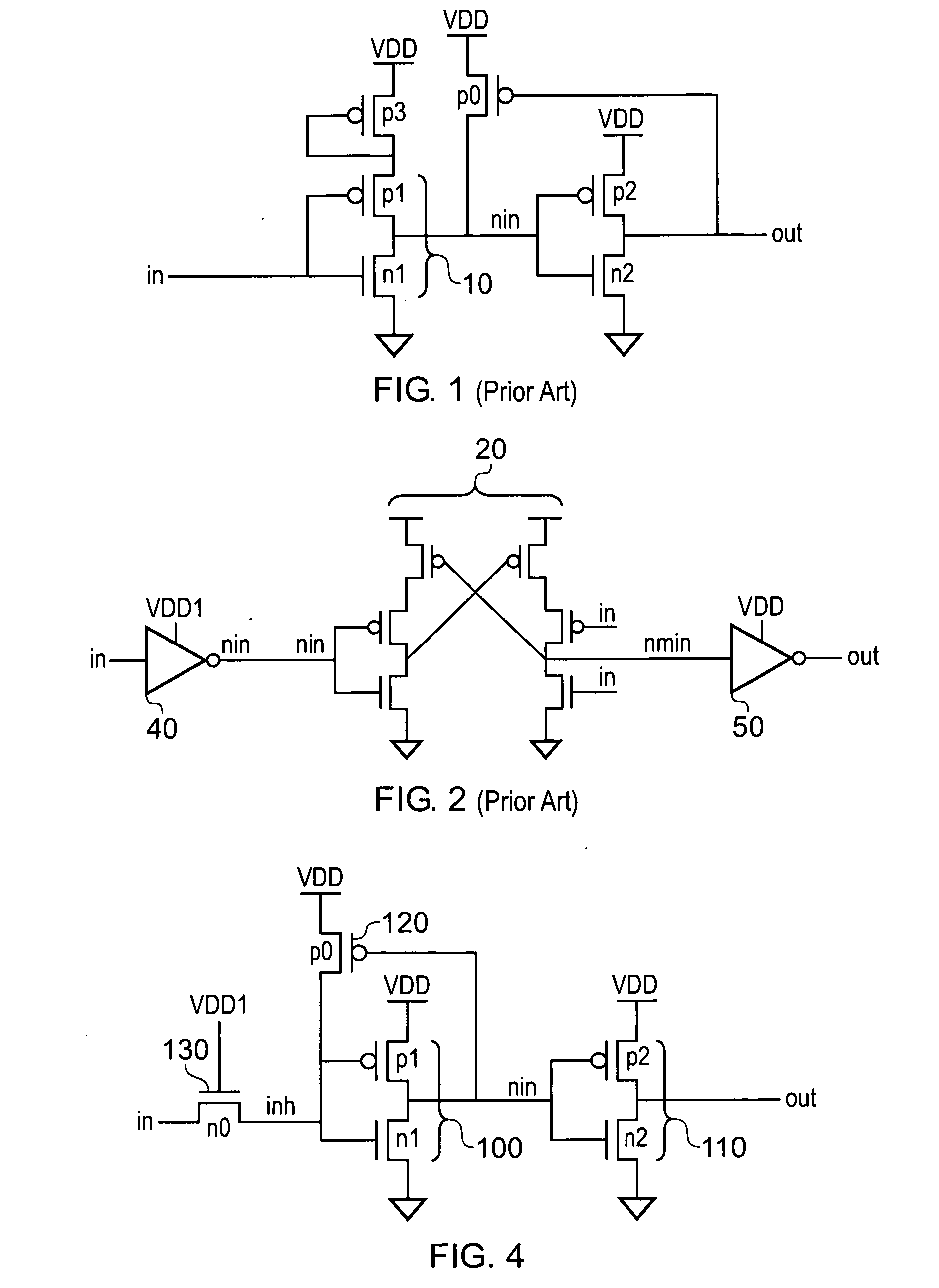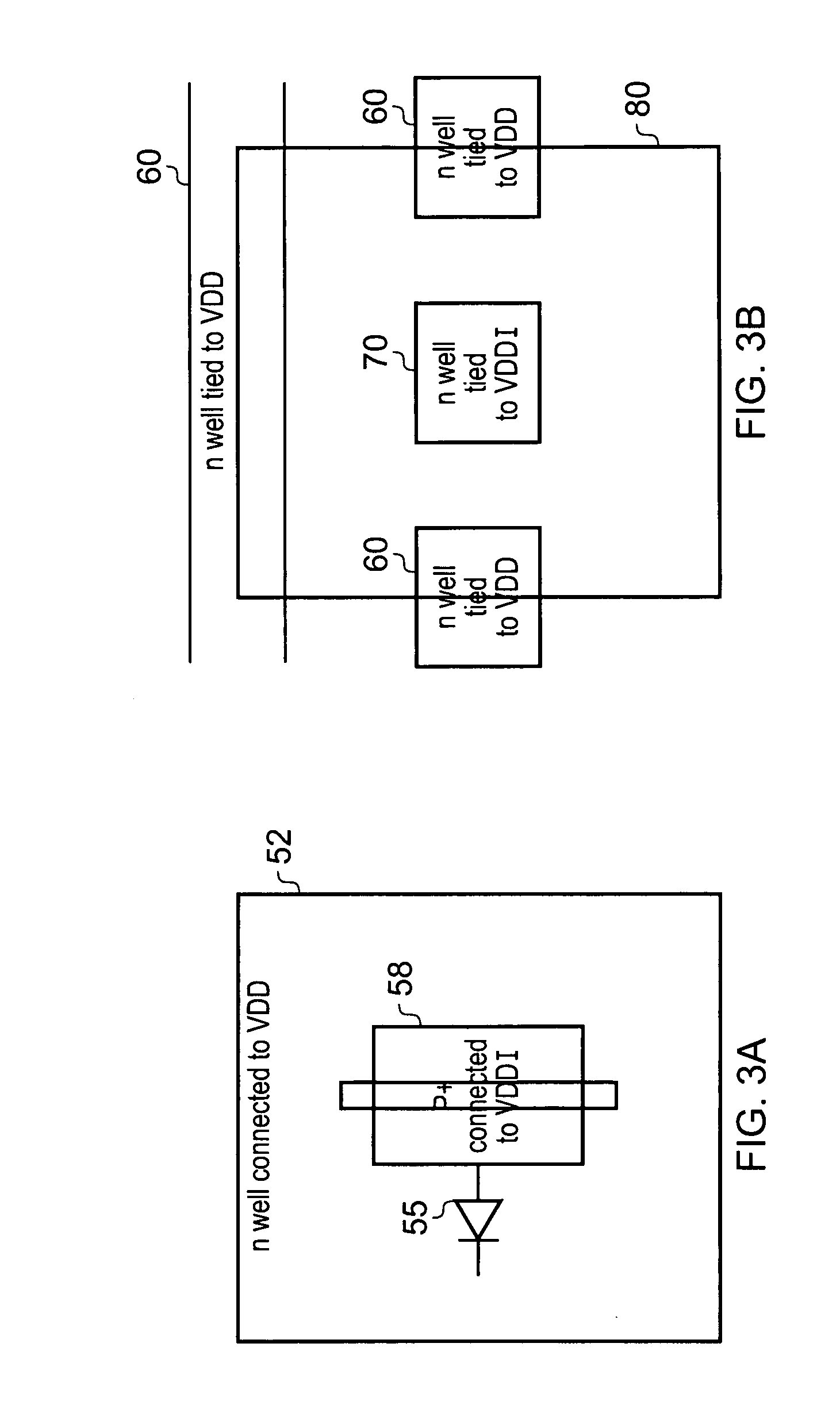Shifting of a voltage level between different voltage level domains
a voltage level and domain technology, applied in the field of level shifters, can solve problems such as not allowing current to flow
- Summary
- Abstract
- Description
- Claims
- Application Information
AI Technical Summary
Benefits of technology
Problems solved by technology
Method used
Image
Examples
Embodiment Construction
[0050]FIG. 4 shows a voltage level shifter according to an embodiment of the present invention. It comprises an input in for receiving a digital signal in a first voltage domain with a high voltage level of VDDI and an output out for outputting a signal in a second voltage domain with a high voltage level of VDD. The circuit comprises a first inverter 100 comprising a PMOS transistor p1 and an NMOS transistor n1 and a second inverter 110 comprising a PMOS transistor p2 and an NMOS transistor n2. These two inverters act to receive an input signal invert it to produce nin and then invert nin to produce an output signal out. As they are powered by the second voltage domain VDD, the signal they output is in this voltage domain. In addition to these two inverters 100 and 110 the voltage level shifter also comprises two switching devices 120 and 130. Switching device 120 comprises a PMOS transistor connected between the output of the first inverter and its input. This PMOS transistor is p...
PUM
 Login to View More
Login to View More Abstract
Description
Claims
Application Information
 Login to View More
Login to View More - R&D
- Intellectual Property
- Life Sciences
- Materials
- Tech Scout
- Unparalleled Data Quality
- Higher Quality Content
- 60% Fewer Hallucinations
Browse by: Latest US Patents, China's latest patents, Technical Efficacy Thesaurus, Application Domain, Technology Topic, Popular Technical Reports.
© 2025 PatSnap. All rights reserved.Legal|Privacy policy|Modern Slavery Act Transparency Statement|Sitemap|About US| Contact US: help@patsnap.com



